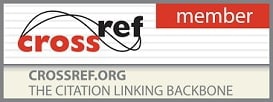Printed Journal | Refereed Journal | Peer Reviewed Journal
2021, Vol. 2, Issue 1, Part A
A frequency analysis of i like to and i like-ing
Author(s): Namkil Kang
Abstract: The ultimate goal of this paper is to provide an in-depth analysis of the frequency of I like to and I like –ing in the COCA, BNC, and COHA. The COCA clearly indicates that the type I like to was preferred over the type I like –ing by Americans. More specifically, Table 1 clearly shows that in the TV/movie genre, I like to and I like –ing were the most preferred by Americans. On the other hand, the BNC clearly indicates that I like to may have been preferred over I like –ing by British people. It is interesting to note that the type I like to was the most frequently used one in the fiction genre. This may imply that British writers are fond of writing a good thing to do in the fiction since what characters like to do makes stories interesting and thus encourages readers to finish reading the novel. Additionally, Table 2 clearly shows that the type I like –ing was the most frequently used one in the spoken genre. This may imply that I like –ing was the most preferable one for British people. When it comes to the COCA, it is noteworthy that the collocation I like to think is the most preferred by Americans, followed by I like to call, I like to see, I like to keep, I like to say, I like to use, I like to go, I like to get, and I like to make, in that order. On the other hand, the collocation I like being is the most commonly used one in America, followed by I like having, I like doing, I like working, I like seeing, I like watching, I like going, I like playing, I like talking, and I like getting, in that order. In addition, the collocation I like to think is the most commonly used one in the UK, followed by I like to see, I like to get, I like to go, I like to keep, I like to know, I like to hear, I like to make, I like to look, and I like to use, in that order. On the other hand, the collocation I like being is the most preferred by British people, followed by I like doing, I like watching, I like having, I like going, I like playing, I like looking, I like driving, and I like using, in that order. Finally, the COHA clearly shows that the type I like to was favored over type I like –ing. A major point to note with regard to the type I like to is that there was no frequency (0 token) in 1810. This in turn implies that I like to may have been the most undesired type. A further point to note is that the type I like to had the highest frequency (279 tokens) in 2000, which in turn suggests that it was the most preferred by Americans. It is noteworthy that there was no frequency (0 token) in the case of I like –ing in 1810, 1820, and 1830. This in turn indicates that it was the most undesired type. On the other hand, the frequency of I like –ing reached a peak (119 tokens) in 2000, which in turn suggests that it was the most preferable type for Americans.
DOI: 10.33545/2707661X.2021.v2.i1a.22
Pages: 10-15 | Views: 508 | Downloads: 137
Download Full Article: Click Here
How to cite this article:
Namkil Kang. A frequency analysis of i like to and i like-ing. Int J Commun Inf Technol 2021;2(1):10-15. DOI: 10.33545/2707661X.2021.v2.i1a.22






